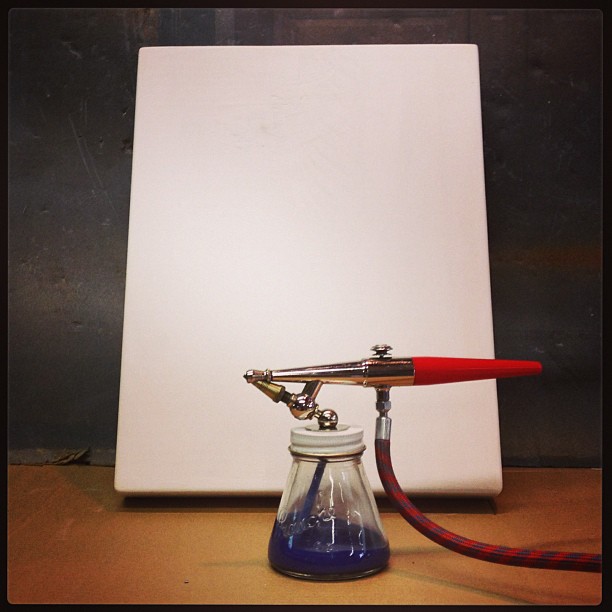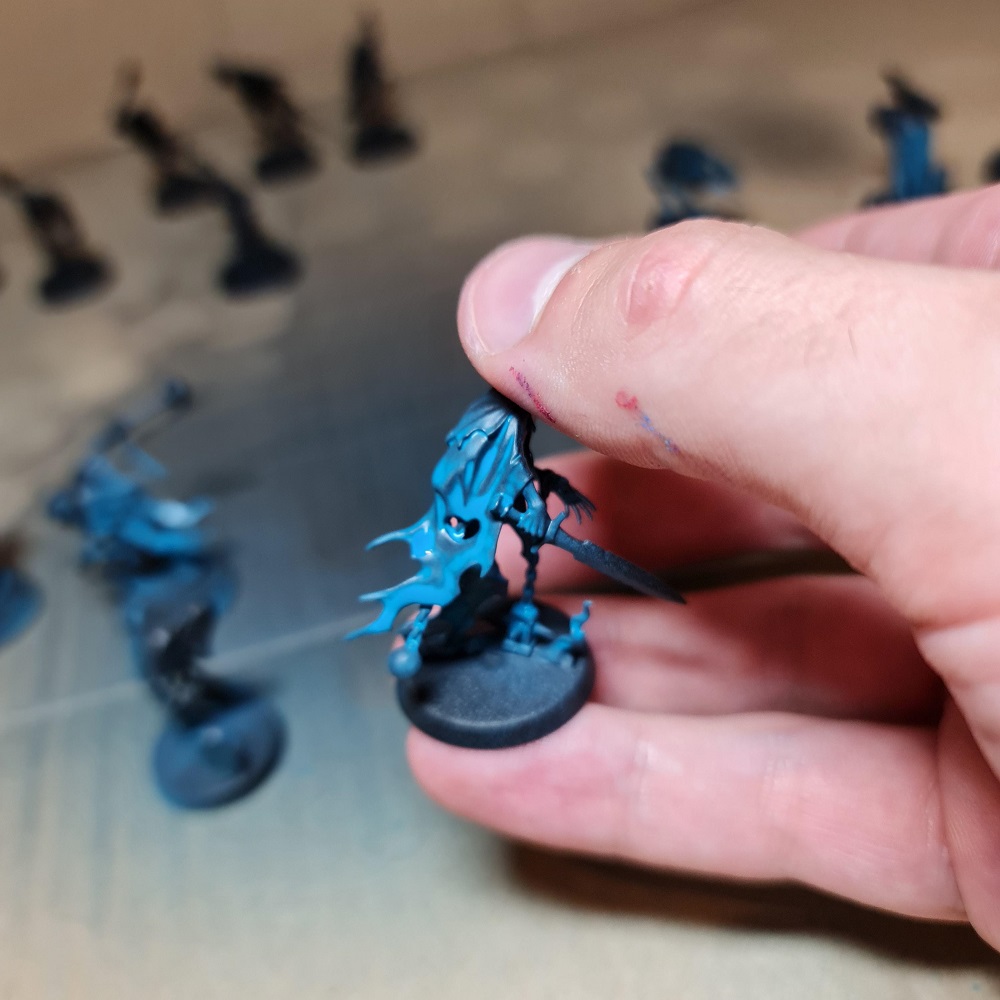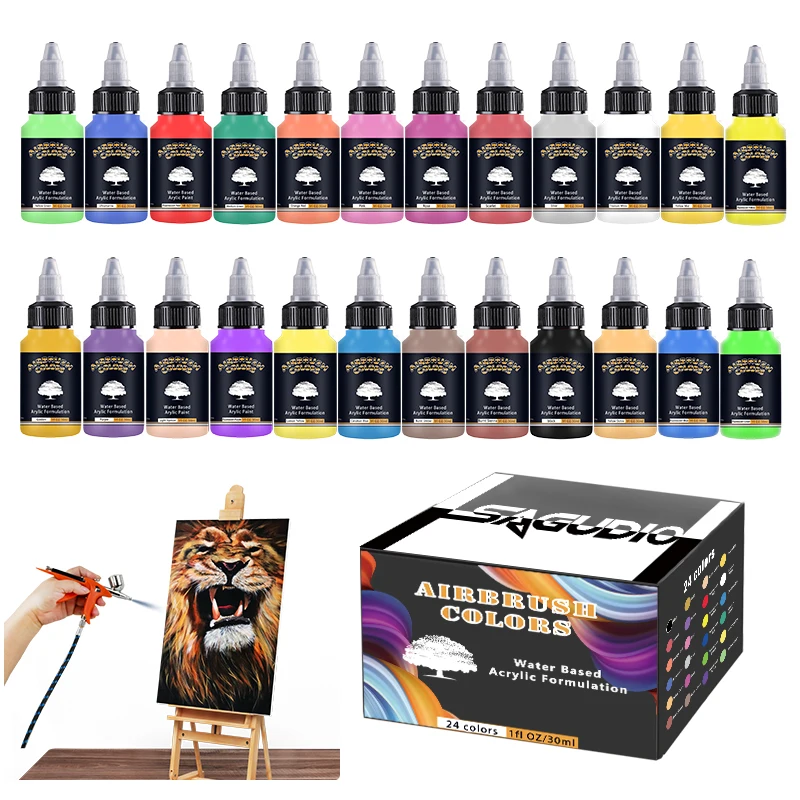Using an airbrush opens up a world of creative possibilities for artists and hobbyists alike. With its ability to produce smooth gradients, fine details, and intricate designs, an airbrush can elevate any art project. However, achieving the best results often depends on using the right paint consistency. Thinning acrylic paint effectively is a crucial step that can greatly influence your airbrushing experience. In this guide, we will explore the essentials of thinning acrylic paint for airbrush use, ensuring you achieve optimal results every time you pull the trigger.
Understanding Acrylic Paint and Its Properties
The Basics of Acrylic Paint
Acrylic paint is water-based, making it a popular choice among artists due to its fast-drying properties and versatility. Unlike oil-based paints, acrylics can easily be cleaned up with water and resume their vibrant colors upon drying. They can be used on a variety of surfaces, ranging from canvas and paper to wood and fabric. However, their thickness can vary significantly based on the brand and formulation, which can affect airbrush performance.
Importance of Consistency
When using an airbrush, the consistency of the paint is crucial. Paint that is too thick may clog the airbrush, create uneven sprays, and produce undesirable textures. Conversely, paint that is too thin may run excessively or produce a washed-out effect. Achieving the right balance will not only make your painting process more enjoyable but will also enhance the overall quality of your artwork. Understanding the properties of acrylic paint will help you determine the right thinning method to use for airbrush applications.

Choosing the Right Thinner
Common Thinning Agents
Several options exist when it comes to thinning acrylic paint for airbrush use. Water is the most common and readily available thinner, but it’s important to use it judiciously. Adding too much water can dilute the pigment and potentially cause the paint to lose its vibrant tone. Other suitable thinning agents include acrylic medium, flow improver, and specialized airbrush thinner. Each of these agents has its own properties that can enhance the paint’s performance without compromising on quality.
Pros and Cons of Each Option
Water is inexpensive and easy to use, but it lacks some of the binding properties found in other thinning agents. Acrylic mediums can extend the drying time and improve adhesion, making them ideal when working on challenging surfaces. Flow improvers help paint maintain its consistency while improving flow, which is valuable for fine details. Specialized airbrush thinners often offer the best results for airbrushing due to their formulated nature, balancing dilution and adhesion perfectly.
The Right Paint-to-Thinner Ratio
Finding the Ideal Ratio
Determining the right paint-to-thinner ratio can vary based on the specific airbrush, the thickness of the paint, and the desired effect. A general guideline is to aim for a ratio of about 1 part paint to 1 part thinner for standard airbrushing. If you want a more transparent wash, you might increase the thinner to paint ratio to 2:1 or even 3:1. Start with small amounts and experiment to find what works best for your particular project.
Adjusting for Different Techniques
Consider your application technique when deciding how much to thin your acrylic paint. For detailed work or very fine lines, you may want to thin the paint more to achieve a smooth and even application. However, if you’re using a broader stroke or creating a background wash, a thicker consistency might produce better coverage. Keep in mind that each application may require tweaks to your thinning ratio, so keep experimenting until you find the sweet spot.

How to Thin Acrylic Paint Properly
Step-by-Step Thinning Process
- Start with Clean Tools: Use a clean mixing container and stir stick to prevent contamination. Any residue from previous paints can affect the consistency of your new mix.
- Add Thinner Gradually: Begin by pouring your desired amount of acrylic paint into the mixing container. Gradually add your chosen thinner, mixing continuously to ensure even dilution.
- Check the Consistency: After mixing, check the paint’s consistency. It should flow smoothly without being too runny. A good way to assess this is to pull a line with the paint and check if it flows evenly without pooling or running.
- Test the Mixture: Before loading your airbrush, test the paint on a scrap piece of material similar to your final surface. This test will give you an idea of how the paint behaves and whether further thinning is necessary.
Ensuring a Smooth Mixture
A key point to remember is that you want to avoid introducing air bubbles while mixing. Stir gently and thoroughly to achieve a consistent blend without trapping air in the paint. If your mixture contains bubbles, they could disrupt the airbrush spray pattern and affect the overall finish of your work.
Preparing Your Airbrush
Cleaning and Maintenance
Before loading your newly thinned paint, make sure your airbrush is clean and well-maintained. Old paint residue can compromise the performance of your airbrush and lead to clogs. Use a cleaning solution specifically designed for acrylic paints, and ensure all parts are free of debris. A well-maintained airbrush is crucial for achieving smooth and flawless applications.
Setting Up Your Equipment
Once your airbrush is clean, set it up according to the manufacturer’s instructions. Make sure your compressor is adjusted to the appropriate PSI (pounds per square inch) for your application. A typical PSI for airbrushing acrylics ranges from 15 to 30 PSI, but this can vary depending on the effect you want to achieve. Familiarize yourself with your equipment to ensure optimal performance.

Techniques for Effective Airbrushing
Practice Makes Perfect
Airbrushing requires a learning curve, so practice is essential. Start with small projects to get a feel for how the thinned paint works with your airbrush. Experiment with different spray techniques, distances, and patterns to gain confidence. Understanding how the paint behaves under different conditions will help you master the art of airbrushing.
Layering for Depth
One of the benefits of airbrushing is the ability to layer colors gradually. Rather than trying to achieve full opacity in one go, apply multiple light coats. This technique creates depth and dimension, allowing for smoother transitions and more vibrant colors. As you layer, the thinned paint blends seamlessly, enhancing the overall effect.
Troubleshooting Common Issues
Clogging and Poor Spray Patterns
Even with proper thinning, you may occasionally experience issues like clogging or uneven spray patterns. Clogging can often happen if the paint is too thick or if the airbrush is not adequately cleaned. If you encounter this, try thinning the paint further or cleaning the airbrush thoroughly before resuming work.
Inconsistent Texture
If you notice inconsistent texture in your application, it might be due to improper thinning or technique. Make sure to check and adjust your paint-to-thinner ratio, and review your spray technique to ensure a steady hand and distance. Light and even strokes are essential for achieving a uniform texture.
Conclusion
Thinning acrylic paint for airbrush use is an essential skill that can dramatically improve your painting results. By understanding the properties of acrylic paint, choosing the right thinner, and mastering the thinning process, you can enhance your airbrushing experience. Remember that practice is key; experimenting with different techniques and ratios will help you find the perfect combination that works for your style and projects.
As you refine your airbrushing skills, you’ll discover a world of artistic possibilities. With patience and practice, you can achieve stunning results that make your work stand out. Enjoy the journey of exploration and creativity as you unlock the true potential of your airbrush, and watch your artistic vision come to life with beautifully thinned acrylic paints.